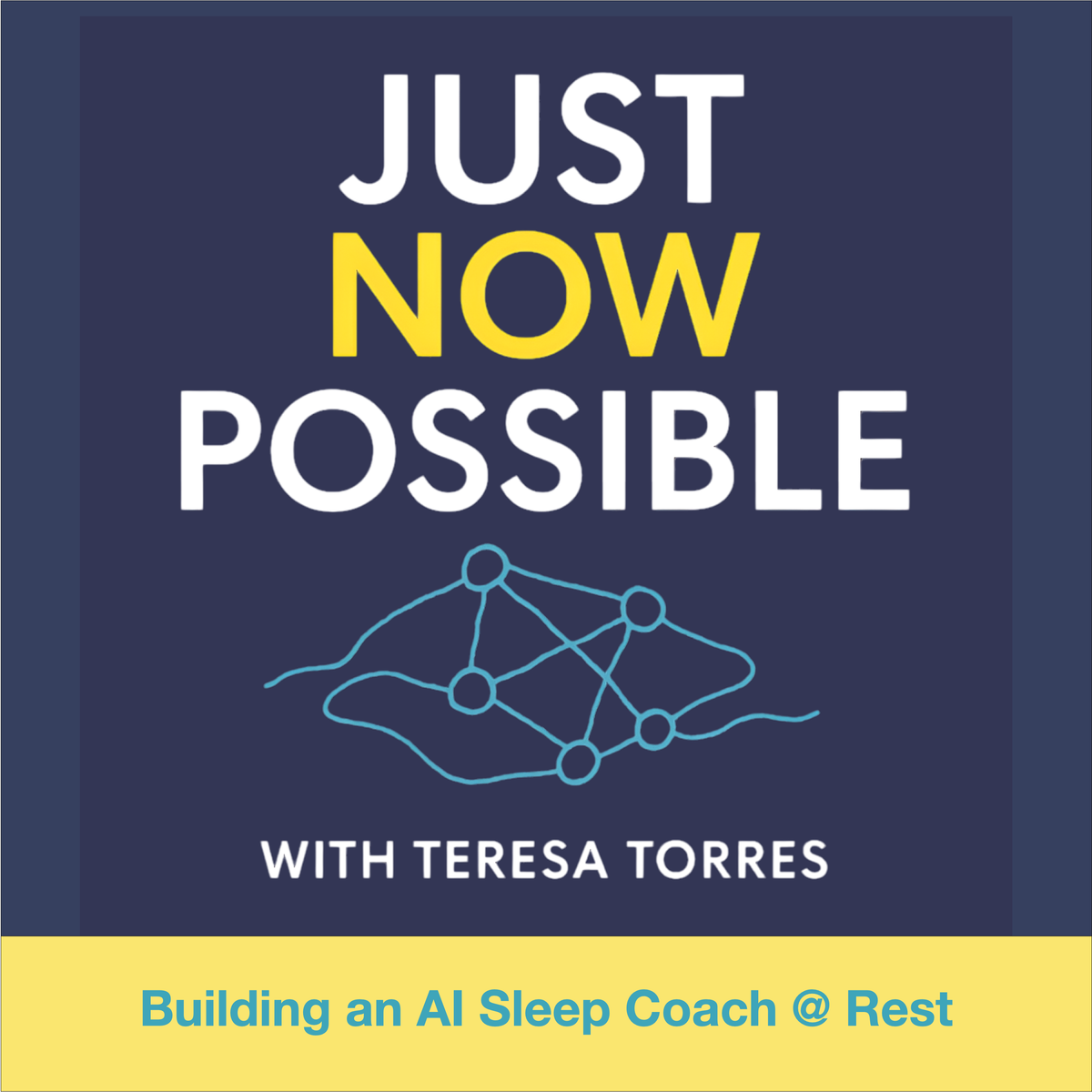Building an AI Sleep Coach: How Rest is Making CBTI Principles Accessible to DIY Sleep Hackers

Listen to this episode: Spotify | Apple Podcasts
What if you could get personalized sleep coaching—inspired by the same principles that cost thousands of dollars and have year-and-a-half waitlists—through a voice AI that checks in with you every morning?
In this episode of Just Now Possible, Teresa Torres talks with Martin Siniawski (CEO and co-founder) and Ignacio Perez (CTO) from Rest about how they built an AI sleep coach inspired by Cognitive Behavioral Therapy for Insomnia (CBTI) principles. The journey started when they noticed users of their podcast app were listening to content to fall asleep, explored sleep audio solutions, and eventually pivoted to an AI-powered voice coach when LLMs emerged.
They share how they evolved from basic chatbots to a sophisticated voice-first system with memory, dynamic agendas, and RAG—all while navigating the tricky line between wellness and medical products. Their "one bite of the apple at a time" approach to building AI offers practical lessons for teams tackling complex, personal AI products.
Show Notes
Guests
- Martin Siniawski, CEO and co-founder, Rest
- Ignacio Perez, CTO, Rest
You'll hear how they:
- Discovered the sleep use case from podcast app user behavior (10% of users, but high willingness to pay)
- Used jobs-to-be-done research to identify "DIY sleep hackers" as an underserved segment
- Chose CBTI (Cognitive Behavioral Therapy for Insomnia) as their foundation—a clinically proven approach with 80% efficacy
- Evolved from text chatbot to voice-first AI using Vapi for voice and OpenAI for reasoning
- Built a memory system that remembers user context (like traveling, having a dog) with time-based relevance
- Created dynamic agendas that drive daily conversations based on sleep data, program stage, and user compliance
- Managed parallel development paths (text via OpenAI Assistants and voice via Vapi)
- Moved from massive system prompts to RAG for general sleep knowledge, keeping user data in prompts
- Navigated wellness vs. medical product positioning with clear guardrails against diagnosis and medication advice
- Used weekly error analysis with domain experts (sleep therapists) to drive product iterations
- Built LLM-powered evals for safety boundaries and experimented with Hamming for voice testing
Resources & Links
- Rest – AI sleep coach app
- Vapi – Voice agent platform Rest uses
- Langfuse – Observability and evals platform
- Hamming – Voice testing platform
- AI Evals Maven Course by Hamel Husain and Shreya Shankar (Get 35% off with Teresa's affiliate link)
Chapters
00:00 Introduction to Rest and Its Founders
00:33 The Origin Story of the AI Sleep Coach
02:07 Exploring the Podcast App and Sleep Use Case
03:35 Transitioning to a Dedicated Sleep Audio App
05:47 Understanding User Segments and Sleep Challenges
07:45 Introduction to the AI Sleep Coach
13:14 The Role of Voice in the AI Sleep Coach
18:46 Daily User Interaction and Features
21:30 Prototyping and Early Learnings
28:09 Navigating Ethical and Regulatory Concerns
30:39 Navigating the Line Between Health and Wellness Apps
31:00 Incorporating Adjacent Disciplines into the App
32:15 The Power of 24/7 Availability
32:53 Evolution of the Chatbot and Error Analysis
34:49 User Experience Improvements and Voice Integration
46:49 Implementing Memory and Personalization
50:18 Dynamic Agenda and User-Centric Conversations
57:37 Evaluation and Guardrails
01:00:05 Future Roadmap and Enhancements
01:03:38 Combining Data Layers for Enhanced AI
01:06:00 Conclusion and Final Thoughts
Full Transcript
Podcast transcripts are only available to paid subscribers.



